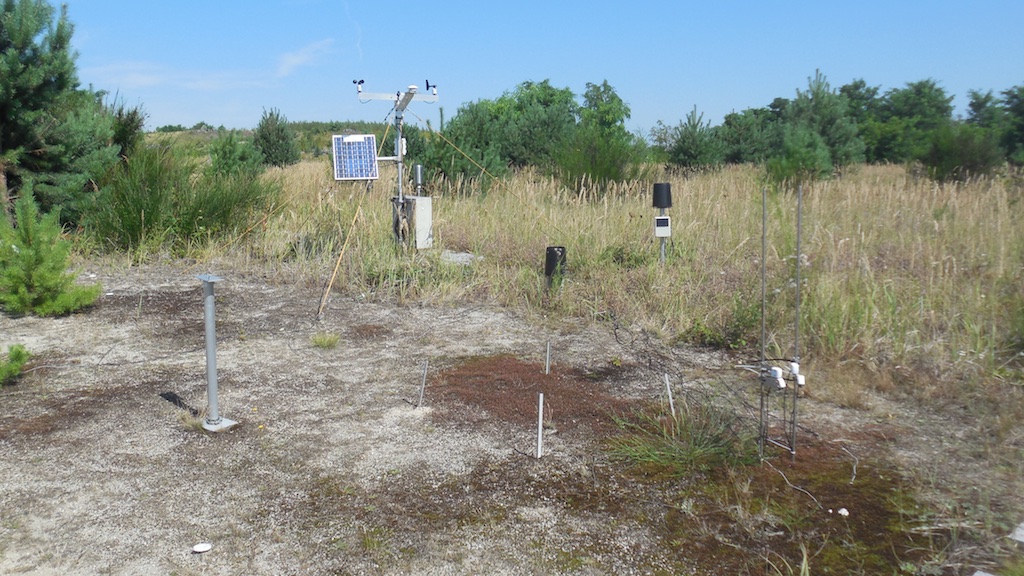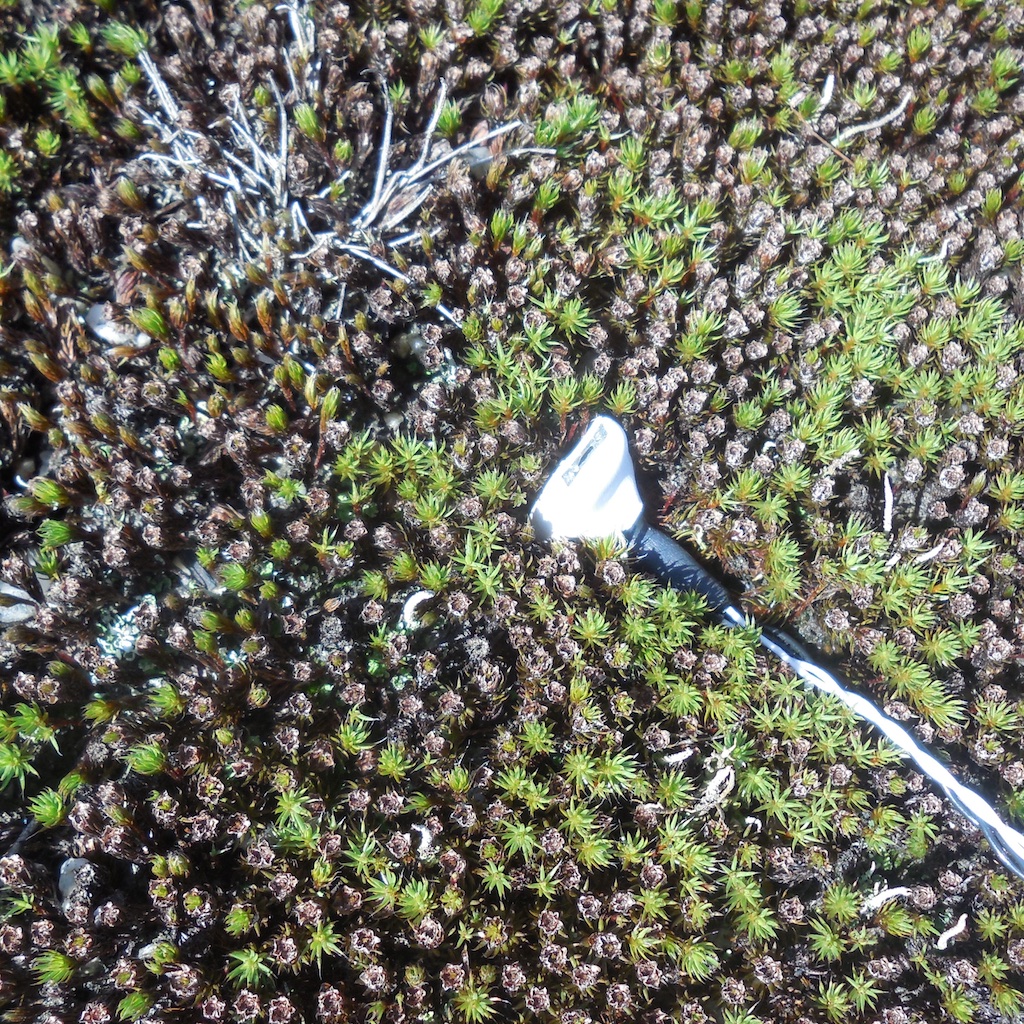Climate dependence of physiological activity and small-scale development of biological soil crusts in Brandenburg
Type of project: research project with a duration from January 2018 to December 2020
Lead: Dr. Maik Veste, Brandenburg University of Technology Cottbus-Senftenberg and University of Hohenheim
Coorporation partners: M.Sc. Stella Gypser, (BTU) and Dr. Werner B. Herppich, Leibniz Institute for Agricultural Engineering and Bioeconomy, Potsdam-Bornim
About the project
Nutrient-poor raw soils are extreme locations. The topmost millimetres of these soils are colonised by stress-tolerant, alternately moist organisms that are adapted to drought and nutrient-poor conditions. These so-called biological soil crusts stick together the soil particles through their filaments and excreted exopolysaccharides. These complex biotic communities consist of a large number of different cyanobacteria, green algae, liverwort, mosses, fungi, bacteria and lichens, and with their complex interactions represent an “ecosystem en miniature”. They promote further soil development through the input of carbon and nutrients and influence processes at the ecosystem level. In Brandenburg, especially the dry grasslands on sand dunes, but also the post-mining landscapes are ecologically interesting locations for studies on the development of biological soil crusts. In addition, the habitats also have a high value for the landscape from a nature conservation point of view, so that studying the function of the bio-crust can provide new aspects for the ecology of these habitats.
The aim of the project is to investigate the spatial and temporal development of bio-crust on raw soils in open landscapes and its significance for the carbon balance. Field experiments will be carried out in different climatic conditions to determine the influence of precipitation and dry phases on the physiological activity phases of different organisms and their growth. The spatial differentiation of the different biocrust is also controlled by the microclimatic boundary conditions. Research will focus on the ecological mechanisms of microclimatic processes between the soil surface and the adjacent atmosphere and their significance for the ecophysiology of photoautotrophic soil organisms and spatial differentiation.
With its microclimate station, the Linde research station has ideal research conditions for these field studies. In parallel, comparative measurements are being carried out on the artificial water catchment area Hühnerwasser in the Welzow Süd open-cast mine in southern Brandenburg. Optical sensors continuously measure the physiological activity phases of the micro-organisms, while the duration of humidification and the drying behaviour of the different crust types are recorded with newly developed bio-crust-moisture sensors. Ecophysiological measurements of photosynthesis with imaging techniques and in air-conditioned gas exchange cells complement the long-term field studies. Here, a projection of the physiological activity phases over the course of the year is an indispensable prerequisite for balancing the annual carbon fluxes and the growth of the bio-crust. From these investigations, the importance of bio-crusts for soil development and the carbon balance of initial soils in the Central European climate is derived.


